Are you in or around Tokyo and looking for a micro-tourism destination off the beaten track? How about Sawara, an historic river town in Chiba just under two hours from Tokyo, a perfect distance for an overnight get-away. Sawara’s riverside district, once a bustling cargo transit point, is now an historical preservation district and there are other points of interest nearby that provide plenty to fill up a week-end.
In pre-industrial Japan, agricultural goods were usually carried from the countryside to urban areas on rivers and canals. Some river towns became particularly important transit points. Sawara, built around the Onogawa river, a small tributary of the mighty Tone River near its mouth, is exactly such a place.
The main sight of the town is its historical riverfront, lined with preserved buildings. Situated less than a 10 minute walk from the Sawara train station, the preservation district covers about a 600 meter stretch of the river, which is more like a stone-lined canal, with occasional landing stages, stone stairs leading down to the water’s edge. Willow trees overhang the waterway and provide some shade to the roadways that flank the river. Wandering these roadways and looking at the waterway and the buildings is both pleasant and relaxing.
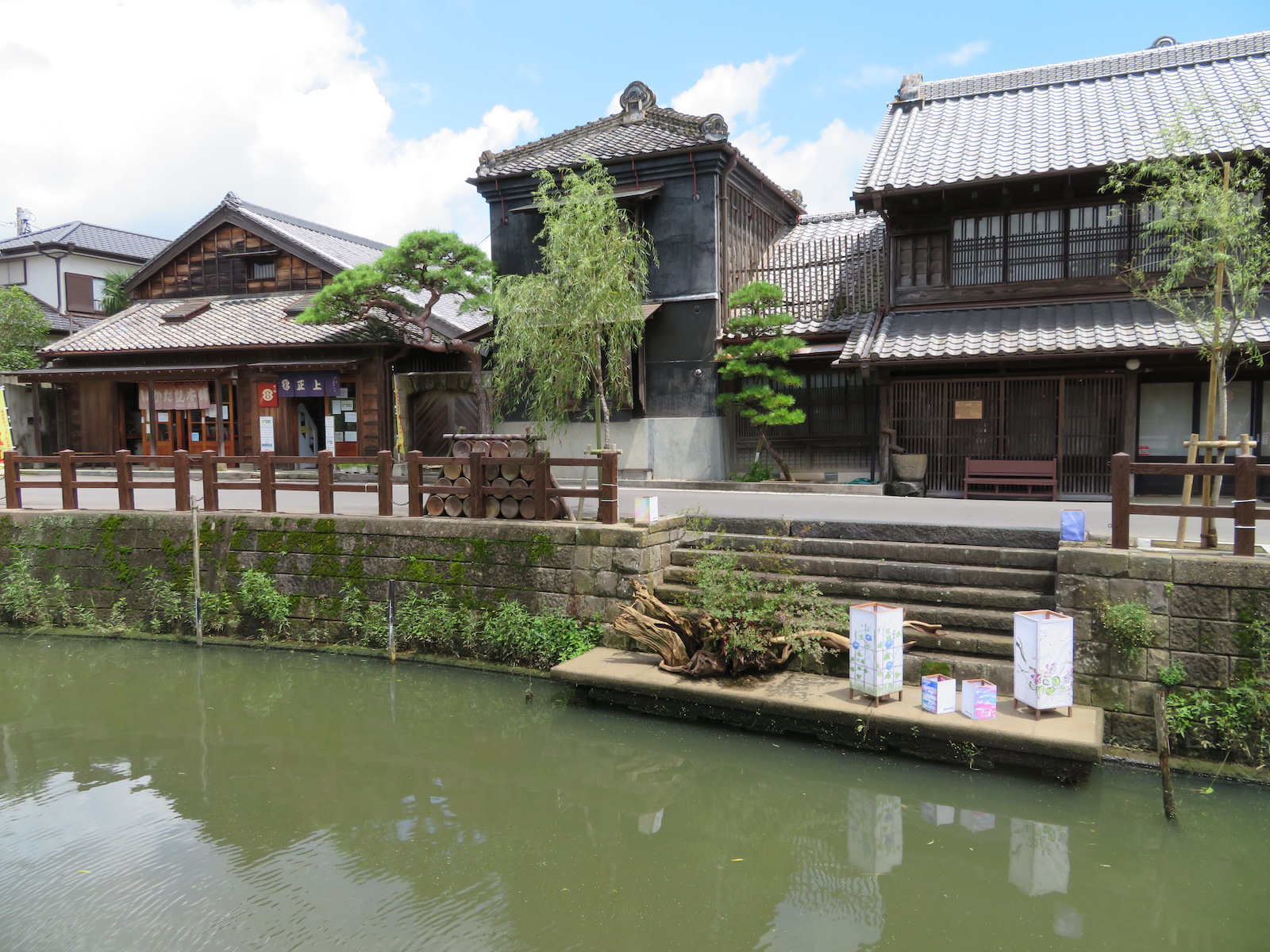
The buildings facing the river are predominately Edo-style shops and warehouses, many of them built in the late 19th century. Merchants and their families often lived “over the shop” and many buildings have distinctive wooden slats in front of their windows to afford privacy while allowing airflow. Some of these historic buildings have been renovated and tastefully decorated to provide upscale accommodation managed by Nipponia Hotels. Many of the storefronts are now occupied by shops selling unique handicrafts and local speciality items.
There are five bridges crossing the river in the preservation district. Perhaps the most interesting is the Toyohashi bridge, farthest upriver. This bridge was originally a wooden aqueduct carrying water to irrigate paddies on the river’s left bank. The aqueduct was later covered with a deck to form a bridge. Even these days, an aqueduct flows beneath the bridge. Every half hour, an overflow valve is opened for about five minutes, releasing a sheet of water from the aqueduct into the river below. The sound of the falling water has given the bridge its colloquial name of the “Ja Ja bridge.”
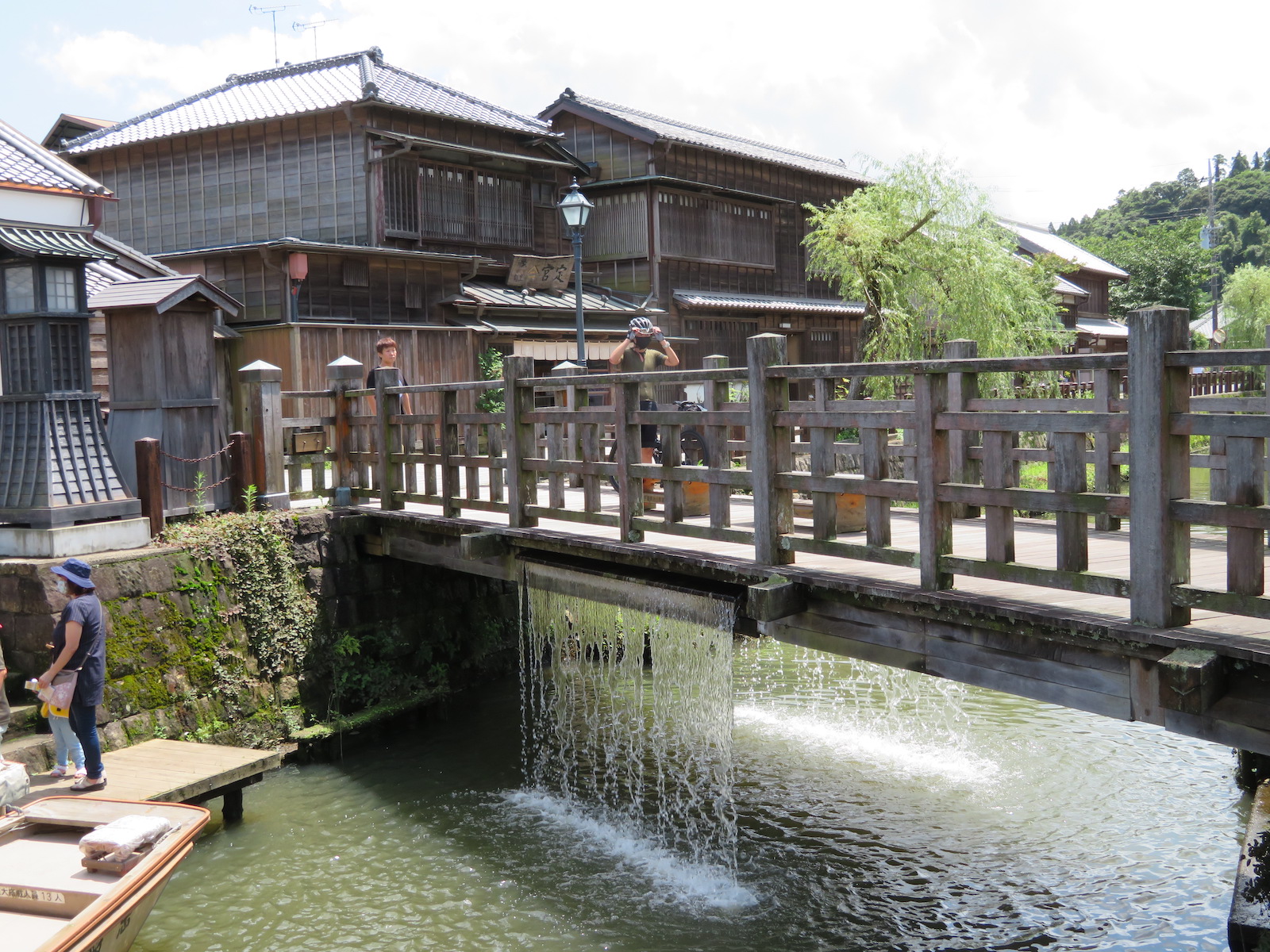
On either side of the Ja Ja bridge are sites associated with one of Sawara’s favorite sons, Ino Tadataka (1745-1818). Ino, the adopted son of a leading Sawara merchant family, was an amateur surveyor/cartographer who, in the period between 1800 and 1816, led 10 survey trips across Japan to create the first complete map of Japan. The Ino Tadataka Memorial Museum, on the left bank of the river, contains exhibits on his life and work. (Hours: 9 a.m.-4:30 p.m., Tuesday through Sunday; Admission: 500 yen). The Ino family home sits on the right bank of the river and is open daily from 9 a.m. to 4:30 p.m., free of charge. The irrigation channel that feeds the aqueduct runs through the garden of the family home, its water so clean and clear that crayfish abound and can easily be seen.
Featuring prominently in both the museum and the Ino family home are reproductions of the inclinometer used by Ino, a sextant-like tool that surveyors use to measure the angle of slopes and calculate elevation. It is practically a symbol of Sawara and can also be seen adorning the end posts of some of its bridges.
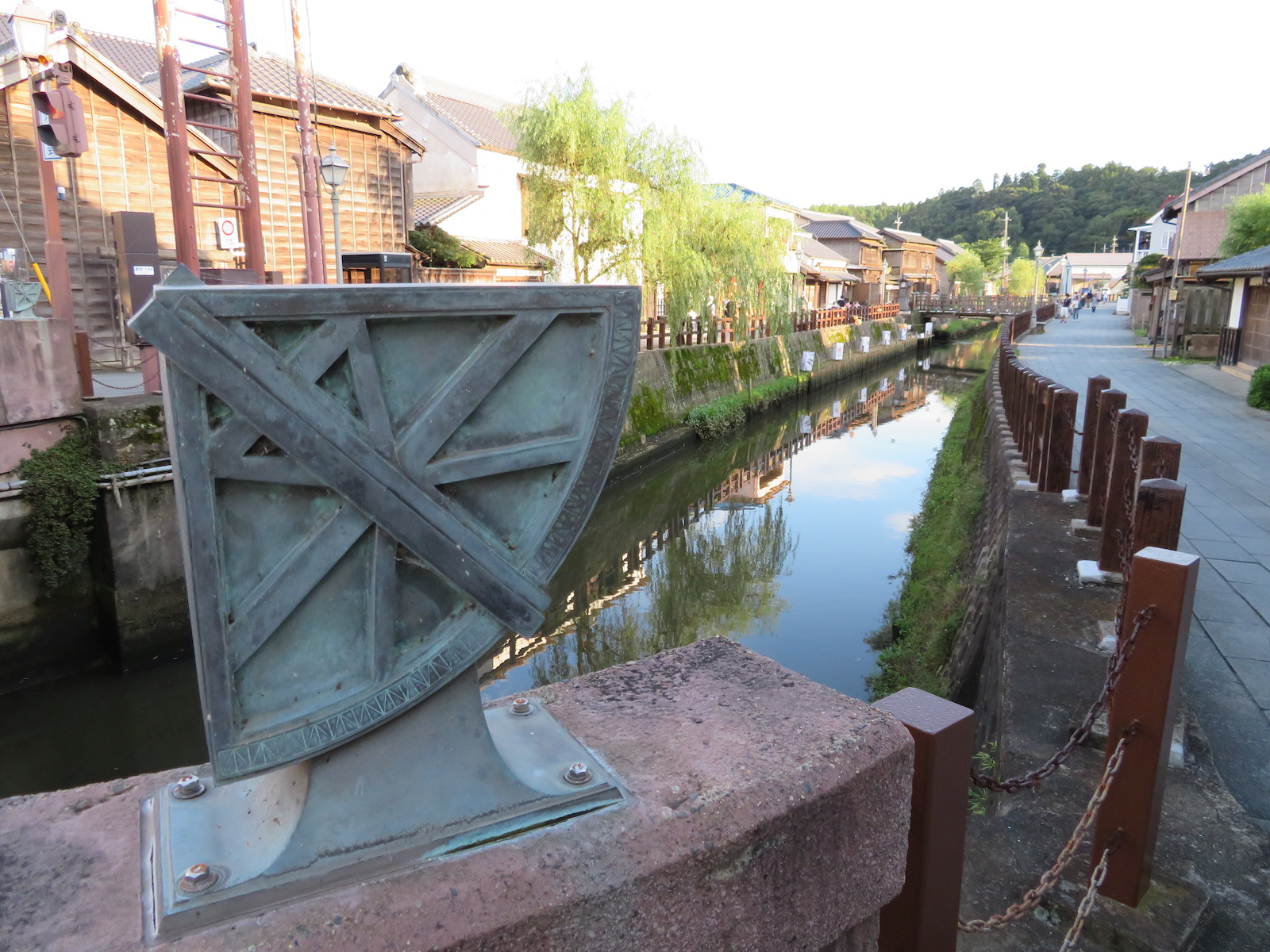
Near the Ino family home is a boat landing where visitors can board a boat for a short trip on the river itself. Depending on the season, the boats are motorized or poled. Either way, the trip is a slow-paced chance to view the town from an entirely different perspective and get a taste of how the river traffic moved in earlier times.

Sawara’s Yasaka Shrine, just a few blocks from the river, is host to a Gion Matsuri every July that features a parade of four meter-tall dashi floats similar to those used in Kyoto’s Gion Matsuri. There is a float museum on the shrine grounds where visitors can see two of the ornate floats used in the festival (there are a total of 14 floats) and learn more about the festival. There is also an English language film introducing the festival and the sights of Sawara. (Hours: 9 a.m.-4:30 p.m., Tuesday through Sunday; Admission: 400 yen)
Although it has been cancelled for 2020, Sawara usually has an autumn festival in the middle of October when the floats are again paraded through the streets.
As a cargo transit point, Sawara was also known for processing agricultural produce, making sake, miso, soy sauce and pickles, which were then shipped off to Edo (present-day Tokyo). Also a few blocks from the river (in the opposite direction from Yasaka Shrine) are two sake breweries that are still in production. The Tokun Brewery offers free tours daily every half hour from 10 am to 11:30 a.m. and from 1 p.m. to 3:30 p.m. It also provides free tastings (except for their prize-winning Daiginjo, for which they charge 300 yen per glass). Tours were suspended in the middle of 2020 due to the contagion, so it is advisable to phone ahead to confirm (0478-55-1122).
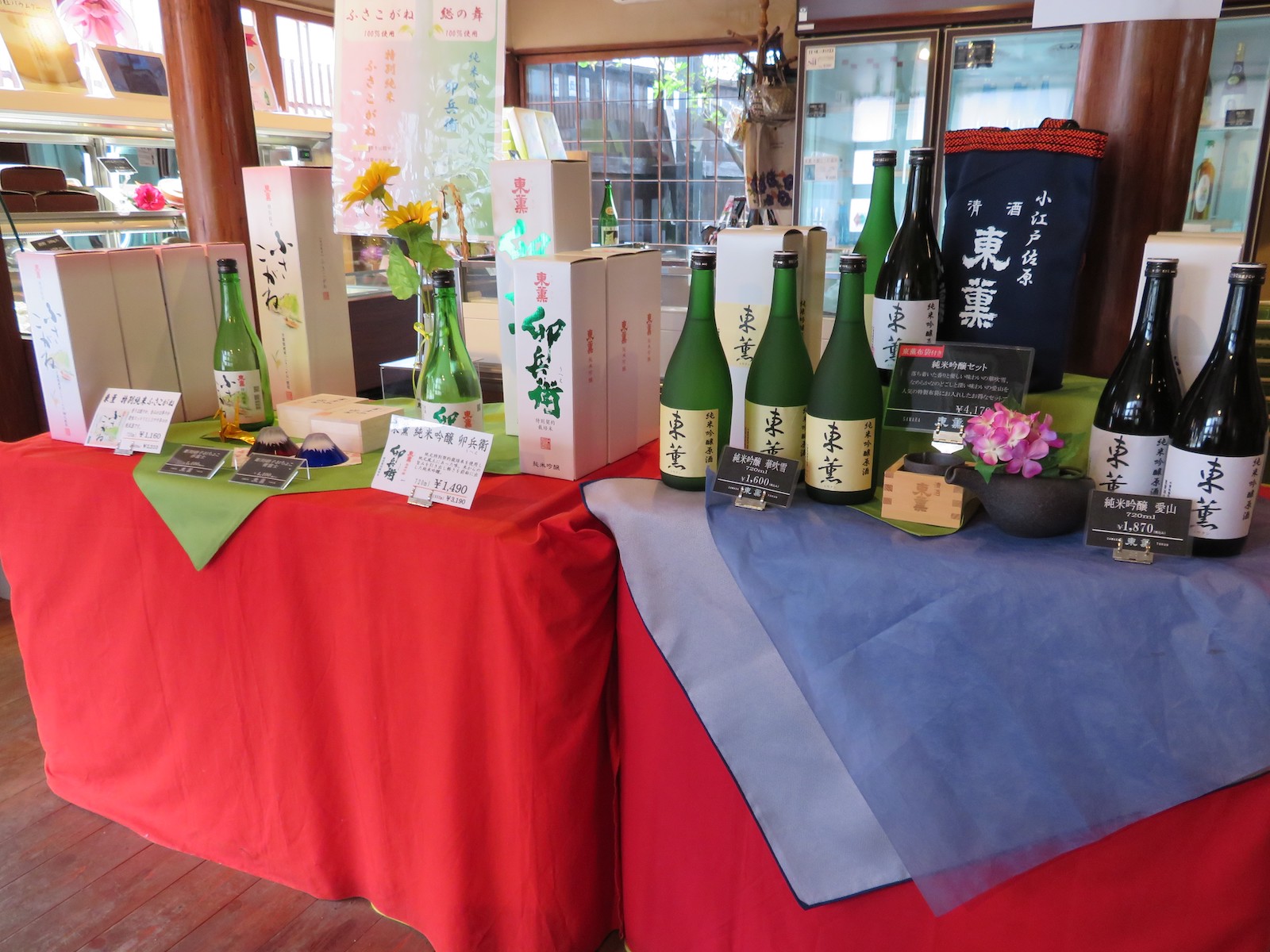
The area around Sawara is relatively flat, making it popular with bicyclists. Rental bicycles are readily available (inquire at one of two tourist information centers). The two most popular destinations are Katori Shrine and Suigo Sawara Ayame Park.
Katori Shrine was founded nearly 2,700 years ago and is a major religious center for the area. Dedicated to the god of swords and lightning, it was especially popular among samurai in the middle ages. The shrine sits on a densely wooded hillside, a location exuding a serenity that belies its warrior associations.
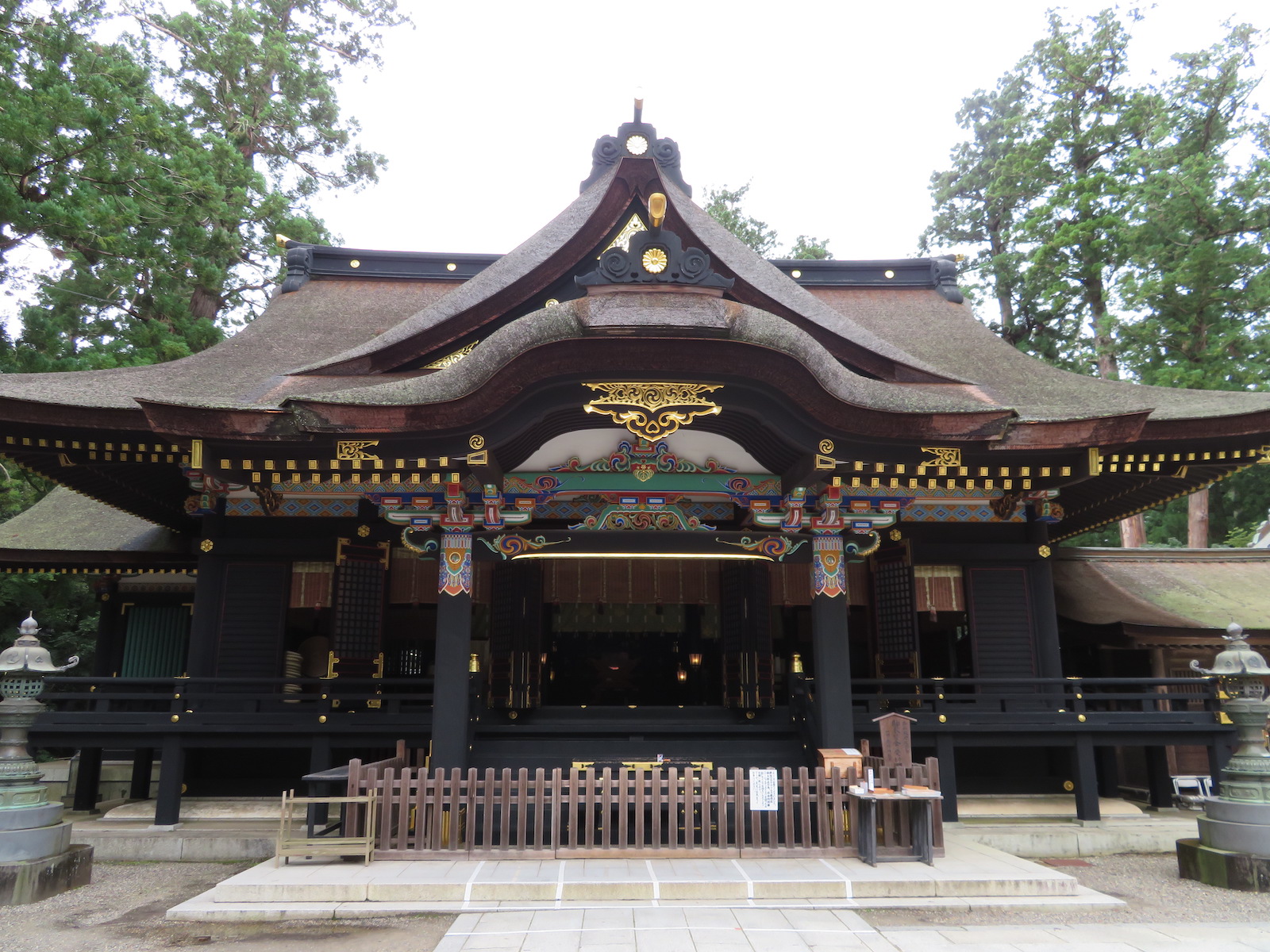
Suigo Sawara Ayame Park is an iris garden that is a must-see for those visiting in the early summer months when iris are in bloom. The garden surrounds a small pond, crossed by a wooden bridge at one narrow point. Visitors can have boat rides on the pond for a different view of the blooms, also a popular activity for bridal couples in full traditional dress, providing a very different photo op for visitors to the park. Can you hear everyone’s camera shutters clicking away?
From Tokyo station, take the Sobu Rapid Train bound for Narita Airport and change at Narita to the Narita Line. It takes just under two hours. There is also a Keisei bus from the Yaesu side of Tokyo station that reaches Sawara in just over an hour and a half.
Vicki L Beyer, a regular Japan Today contributor, is a freelance travel writer who also blogs about experiencing Japan. Follow her blog at jigsaw-japan.com.
© Japan Today Take our user survey and make your voice heard.
Take our user survey and make your voice heard.















1 Comment
Login to comment
Aly Rustom
Been there. It is absolutely gorgeous.